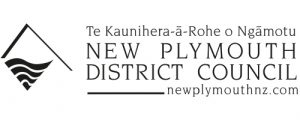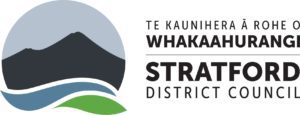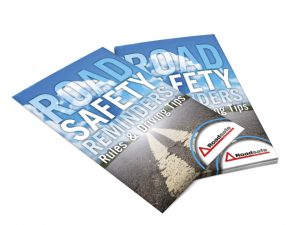Roadsafe Taranaki collaborates with key road safety stakeholders to try and reduce death or injury on Taranaki roads.

About Us



Who we are
Roadsafe Taranaki is a partnership managed by the South Taranaki District Council on behalf of the New Plymouth, Stratford and South Taranaki district councils to promote road safety throughout the Taranaki region. It is the longest running ‘shared service’ between the three Taranaki district councils.
Why we’re here
Road trauma in Taranaki is a significant issue for a small region within New Zealand. Every death or injury on the road has devastating impacts on families and the small communities we live in, and is why we support the Road to Zero vision of the New Zealand Government.
Roadsafe Taranaki has a focus on education to help change behaviour and attitudes through a range of activities and events around the region. The key objective is to reduce deaths and serious injuries and to improve the safety of all road users who travel on Taranaki roads. Education is just one tool in this objective and partnerships are crucial to achieving success in any road safety programme.


What we do
Roadsafe Taranaki is funded to deliver activities that target high and medium road safety risks in Taranaki. These risks have been identified through local crash data, community feedback and through NZTA via their current Land Transport Programme (LTP) and safer journeys research. As part of the activity delivery Roadsafe Taranaki supports the Safe System approach.
Some of the activities delivered by Roadsafe Taranaki include:
- Restraint education
- Impaired driving (alcohol and drug) presentations
- Advanced driver training (theory and targeted practical sessions for inexperienced drivers)
- Targeted road safety events for particular audiences, e.g. older drivers, high risk drivers
- Finding guest speakers to talk in schools, workplaces or in the community
- Supporting Students Against Dangerous Driving (SADD) in secondary schools
- Delivering ‘Back to School’ campaigns at the start of the school year
- Working with community organisations that deliver driver licencing courses
- Coordinating and managing the Taranaki Workplace Road Safety Charter, including workshops, mentoring and newsletter.
Partnerships
A number of agencies and organisations work with Roadsafe Taranaki to deliver collaborative road safety projects that follow best practise and achieve the desired outcomes of education and improving driver attitude and behaviour.
Some of the collaborative projects include:
- Motorcycle training
- Ready2Drive expos for young drivers
- Cycle skills training
- Fatigue stops
- Intersection campaigns
- What are you missing?
- Recidivist drink driving.
Local businesses support the delivery of road safety programmes through the supply of funding, resources or personnel and Roadsafe Taranaki acknowledges this support and looks forward to continuing these partnerships.
Background
Roadsafe Taranaki delivers a regional road safety programme which is jointly funded with the New Zealand Transport Agency (NZTA) contributing 62% while the three councils split the remaining 38% (New Plymouth 60%, Stratford 10% and South Taranaki 30%).
Roadsafe Taranaki employs one full-time and two part-time road safety staff, two part time providers are contracted to undertake the Taranaki Road Safety Workplace Charter delivery and this team is supported by casual staff, volunteers and road safety partners with the Community Development Manager at STDC over-seeing the programme delivery.
We are very grateful for the support we receive and welcome idea’s, contributions and partnerships that embrace the key road safety messages and enhance our programme.
History
Roadsafe Taranaki was formed in 2004 after the Land Transport Safety Authority (LTSA) changed how the Community Road Safety Programme (CRSP) was delivered in the regions. The CRSP had been delivered by the Taranaki Regional Council until 2002 when LTSA reviewed its national guidelines and funding processes and shifted the CRSP from being project focussed to a community development focus. The LTSA wanted to see Road Safety Coordinators working with communities to develop their own solutions and projects to address local road safety issues. It also initiated a drive to house Road Safety Coordinators within territorial local authorities rather than regional ones.
In response to these changes, the three district councils within the Taranaki region (New Plymouth, Stratford and South Taranaki) agreed to establish a joint Management group for the purpose of employing or contracting personnel to deliver the CRSP. A memorandum of understanding (MOU) has been signed between the three councils with the administration of Roadsafe Taranaki sitting within the South Taranaki District Council (STDC).
What is the Safe System approach to road safety?
The Safe System approach aims for a more forgiving road system that takes human fallibility and vulnerability into account. Under a Safe System we design the whole transport system to protect people from death and serious injury. It reduces the price paid for a mistake so crashes don’t result in loss of life or limb. Mistakes are inevitable – deaths and serious injuries from road crashes are not.
We accept that:
People make mistakes – We need to recognise that people make mistakes and some crashes are inevitable.
People are vulnerable – Our bodies have a limited ability to withstand crash forces without being seriously injured or killed.
We need to share responsibility – Those who design the road system and those who use the roads must all share responsibility for creating a road system where crash forces don’t result in death or serious injury.
We need to strengthen all parts of the system – We need to improve the safety of all parts of the system – roads and roadsides, speeds, vehicles, and road use – so that if one part fails, other parts will still protect the people involved.
Under the Safe System approach, all system designers must share the responsibility for road safety outcomes. System designers include planners, engineers, parents, policy makers, enforcement officers, educators, utility providers, insurers, vehicle manufacturers and importers, the media, fleet managers and many more.

